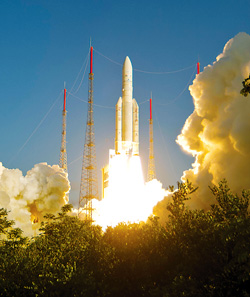INDIAN ARMED FORCES CHIEFS ON OUR RELENTLESS AND FOCUSED PUBLISHING EFFORTS

The insightful articles, inspiring narrations and analytical perspectives presented by the Editorial Team, establish an alluring connect with the reader. My compliments and best wishes to SP Guide Publications.

"Over the past 60 years, the growth of SP Guide Publications has mirrored the rising stature of Indian Navy. Its well-researched and informative magazines on Defence and Aerospace sector have served to shape an educated opinion of our military personnel, policy makers and the public alike. I wish SP's Publication team continued success, fair winds and following seas in all future endeavour!"

Since, its inception in 1964, SP Guide Publications has consistently demonstrated commitment to high-quality journalism in the aerospace and defence sectors, earning a well-deserved reputation as Asia's largest media house in this domain. I wish SP Guide Publications continued success in its pursuit of excellence.
- Appointments Committee of Cabinet approves one-month extension in service of Chief of the Army Staff
- Admiral Dinesh K. Tripathi assumes Command of the Indian Navy as 26th Chief of the Naval Staff
- Prime Minister witnesses 'Bharat Shakti' – a Tri-Services Firing and Manoeuvre Exercise in Pokhran, Rajasthan
- Interim Defence Budget 2024-25 — An Analysis
- Union Defence budget 2024
- Prime Minister Modi Commemorates Indian Navy Day in a Grand Ceremony
GSAT-7 Another milestone

Though many foreign satellites on L Band have footprints over India, use of a foreign satellite for operational military communications raises legitimate apprehensions of security
The recent launch of GSAT-7, India’s first military satellite from Kourou spaceport in French Guiana on August 30, is another feather in our military capacity building particularly in terms of surveillance capabilities. The satellite is expected to be fully operational by end September.
Armed with multiple defence applications, the satellite will boost our maritime surveillance capabilities, giving a major push in ensuring national security at sea. Primarily a naval satellite, the Indian Navy would be the primary user of this multi-band indigenous communication satellite. Communication transponders of GSAT-7 are planned to be switched on by mid- September after the Indian Space Research Organisation (ISRO) places the satellite in its orbital slot of 74 degrees into geostationary orbit at an altitude of 36,000 km above the equator. Frequency bands of GSAT-7 will help space-based marine communications in India and the surrounding seas replacing existing Inmarsat base global satellite communications from the Indian Navy’s ships.
GSAT-7 is an advanced communication satellite that is carrying payloads in UHF, S, C and Ku Bands providing a wide range of service spectrum from low bit rate voice to high bit rate data communication capabilities to users.
Globally, communication satellites are functioning on C, Ku, Ka, S and L Bands. C Band is widely used and proven, has large bandwidth and has no rain attenuation. Ku Band has similar advantages plus Communication on the Move (COTM) is possible. However, in both C and Ku Band, the equipment is not easily portable and is prone to mechanical failure due to size, weight and movement. The subassemblies are large and so the installation time is considerable. In the Ka Band, broadband communication is possible, power consumption is low, use of solar panels is possible and feasibility of COTM exists.
However, this system gets adversely affected by snow, rain and heavy clouds. Space segment in Ka Band is presently limited in India. The S Band is meant only for radar communications. L Band is by far more reliable especially under NLOS conditions as accurate pointing is not required between satellite and user terminals. The system is highly portable and man-portable option is available, which is suited to the Army. It is light weight with no moving parts, quick to deploy with rapid connectivity, not affected by weather conditions and has low power requirements, lower attenuation and better range.
However, L Band has less bandwidth availability compared to C, Ku, Ka Bands and has interference with terrestrial communications. L Band services include Standard IP, flexible bandwidth based on usage, user control and spot beams. A dispassionate analysis of the various types of satellites would indicate that L Band is most suited for non-terrestrial communications in the tactical battle area (TBA). Moreover, L Band terminals are plug and play, reliable on account of integrated design, communications for land, sea and air applications, flexible and have low initial investments.
For some inexplicable reason none of the indigenous satellites are L Band. Though many foreign satellites on L Band have footprints over India, use of a foreign satellite for operational military communications raises legitimate apprehensions of security. Yet, due to high costs of development and operations of satellite systems, outsourcing of services is considered by many nations.
There is a need to examine implications of hiring a foreign L Band satellite for military communications (till all the requirements of the Army are met through ISRO satellites). Such an exercise should include feasibility of ensuring foolproof security with the Security Gateway positioned within India and with superimposed security solutions developed by CAIR. Obviously, such an arrangement would require firm commitment regarding availability of space segment at all times and under all conditions, aside from security issues being suitably addressed. Need for such examination is necessary in order to leap-frog into net-centricity, which is presently too distant. However, this requires thorough analysis.
We also need to examine whether total military satellite communications should be based on exclusive military communication satellites or a mix of military and commercial communication satellites with adequate security keeping in mind China’s antisatellite capability that will likely target exclusive military satellites more in times of war.
The views expressed herein are the personal views of the author.





